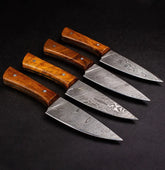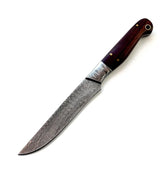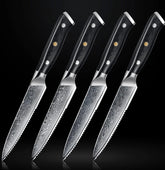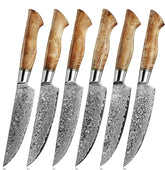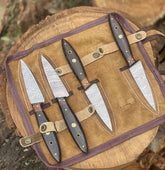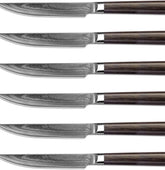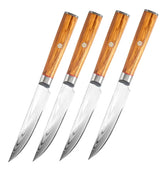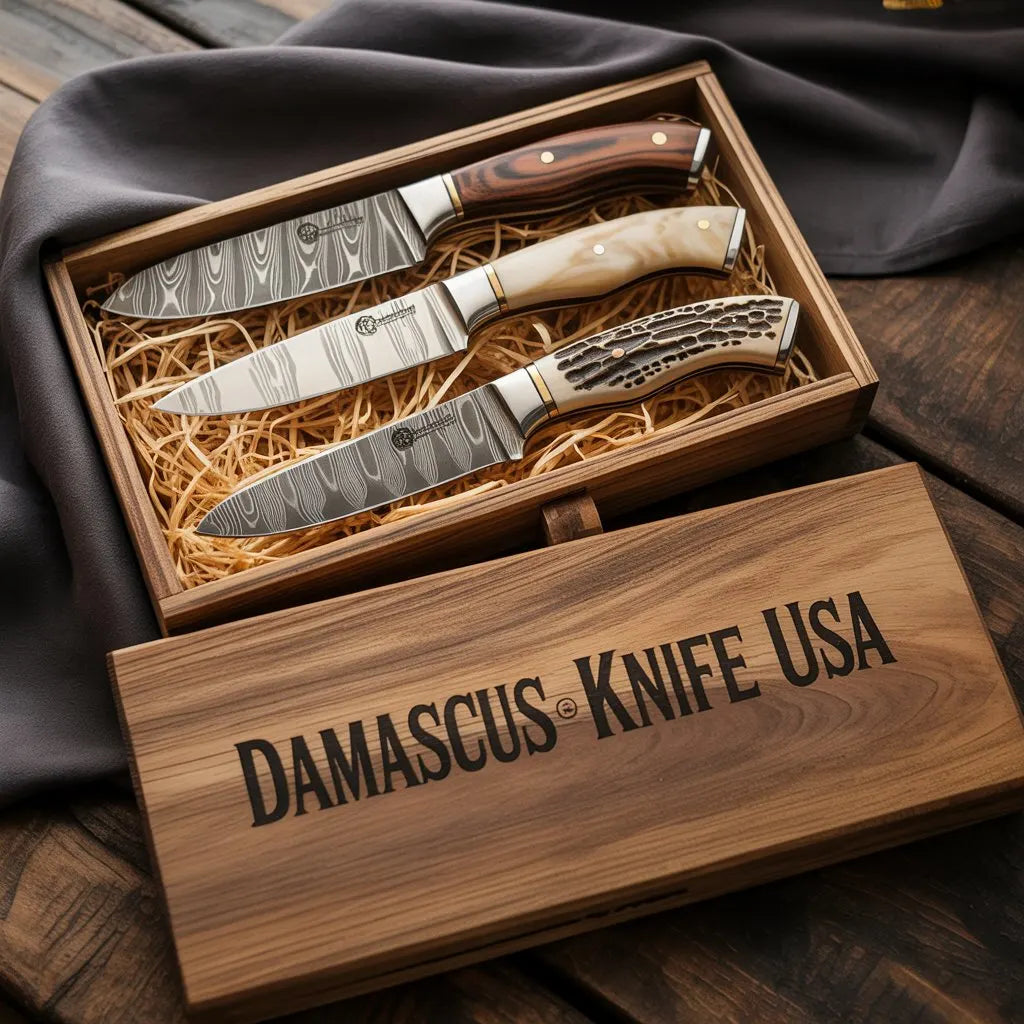Damascus Steak Knives
Experience the difference a premium steak knife brings to your table—engineered for sharp, effortless slicing through steak, hearty vegetables, and more. Whether you’re hosting guests or elevating everyday meals, our hand-forged Damascus steel steak knives deliver style, balance, and professional performance for every dining occasion.
-
Cattleman Damascus Steel Steak Knives - Set of 4Cattleman Damascus Steel Steak Knives – Set of 4 Pay tribute to America’s frontier legacy with our handcrafted Cattleman Damascus Steel Steak Knives. Inspired by the grit and loyalty of the ranchers who roamed the plains, these knives reflect the same rugged resilience and...
- $260.00
$320.00- $260.00
- Unit price
- per
-
Ironroot Legacy Handmade Damascus Steak Knife – 5 Non-Serrated Full-Tang with Premium Wood HandleHand-Forged Elegance for the Modern Table Upgrade your dining experience with the Ironroot Legacy™ Handmade Damascus Steak Knife – a full-tang, non-serrated blade crafted for effortless cutting and timeless elegance. ⚔️ Premium Damascus Steel Blade Forged from over 200 layers of Damascus steel (1095...
- $69.00
$85.00- $69.00
- Unit price
- per
-
Shogun Edge G10 Damascus Steak Knife Set (4-Piece)Precision-Forged Damascus Steel Steak Knives Experience unmatched craftsmanship with the Shogun Edge G10 Damascus Steak Knife Set. Designed for serious steak lovers and culinary perfectionists, this 4-piece set combines legendary materials with modern ergonomic comfort. ? 67-Layer Damascus VG-10 Steel Each knife is expertly...
- $245.00
$280.00- $245.00
- Unit price
- per
-
EmberCut 6-Piece Damascus Steak Knife SetExperience Culinary Precision with the Dynasty 6-Piece Damascus Steak Knife Set Crafted for those who appreciate unmatched performance and refined elegance, this set is forged to impress. From ultra-sharp precision to artisan design, every element of the Dynasty Steak Knife Set is engineered for...
- $310.00
$350.00- $310.00
- Unit price
- per
-
WengiForge Damascus Steak Knife Set – 4-Piece HandcraftedHandcrafted Damascus Steak Knife Set with Wengi Wood Handles Unmatched Cutting Performance Experience the unmatched sharpness of these hand-forged Damascus steak knives. Each blade is crafted from a premium combination of 15N25 and 1080 carbon steel, layered 256 times to create an exquisite twist...
- $170.00
$190.00- $170.00
- Unit price
- per
-
Kyodai 6-Piece Damascus Dining Knife Set – VG10 Core, Pakka HandlePrecision Crafted for the Modern Table Upgrade your dining experience with this 6-piece Damascus dining knife set. Each knife is a perfect fusion of Japanese-inspired craftsmanship and modern utility, delivering smooth, clean cuts with every slice. ? Premium VG10 Damascus Steel Blade Forged with...
- $200.00
$220.00- $200.00
- Unit price
- per
-
ForgeFeast Olive Damascus Steak Knife Set (4 Pc)Elevate Your Dining Experience with Damascus Precision The ForgeFeast Olive Damascus Steak Knife Set offers the perfect fusion of elegance and performance. Crafted for discerning chefs and steak lovers, these 5-inch blades bring unmatched sharpness and artisan beauty to your table. ? 67-Layer Damascus...
- $220.00
$250.00- $220.00
- Unit price
- per

